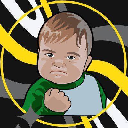-
 bitcoin
bitcoin $108842.957301 USD
-1.88% -
 ethereum
ethereum $3931.777121 USD
-1.66% -
 tether
tether $1.000186 USD
-0.03% -
 bnb
bnb $1153.250882 USD
-2.20% -
 xrp
xrp $2.367904 USD
-1.94% -
 solana
solana $186.182050 USD
-4.20% -
 usd-coin
usd-coin $0.999997 USD
0.00% -
 tron
tron $0.316949 USD
-1.00% -
 dogecoin
dogecoin $0.190780 USD
-3.12% -
 cardano
cardano $0.651324 USD
-2.67% -
 hyperliquid
hyperliquid $37.141055 USD
-0.85% -
 ethena-usde
ethena-usde $0.999224 USD
-0.09% -
 chainlink
chainlink $17.579031 USD
-2.47% -
 bitcoin-cash
bitcoin-cash $509.426284 USD
-2.79% -
 stellar
stellar $0.315298 USD
-2.93%
What should I do after LTC breaks through the key price? Chase the rise or wait and see?
After LTC breaks a key price level, traders can chase the rise for quick gains or wait and see to avoid false breakouts, using technical analysis to guide their strategy.
Apr 30, 2025 at 10:57 am

When LTC (Litecoin) breaks through a key price level, it can be a significant event for traders and investors. The decision to chase the rise or wait and see depends on various factors, including your trading strategy, risk tolerance, and the broader market context. In this article, we will explore the different approaches you can take after LTC breaks through a key price, providing detailed insights into each option.
Understanding Key Price Levels
Before deciding on a course of action, it's crucial to understand what a key price level means in the context of LTC. Key price levels are often identified as support and resistance levels, psychological price points, or levels that have historically triggered significant market movements. When LTC breaks through such a level, it can signal a potential shift in market sentiment.
To identify key price levels, traders often use technical analysis tools such as trend lines, moving averages, and chart patterns. For instance, if LTC breaks above a long-term resistance level, it might indicate a bullish trend. Conversely, breaking below a support level could signal bearish sentiment.
Chasing the Rise: Pros and Cons
Chasing the rise after LTC breaks through a key price level involves buying the cryptocurrency immediately after the breakout in hopes of capitalizing on the upward momentum. This approach can be lucrative but comes with its own set of risks.
- Pros of Chasing the Rise:
- Potential for Quick Gains: If the breakout is genuine and the market continues to move in the same direction, you could see significant profits in a short period.
- Momentum Trading: Chasing the rise aligns with momentum trading strategies, which can be effective in trending markets.
- Cons of Chasing the Rise:
- Risk of False Breakouts: Sometimes, LTC might break through a key level only to reverse back, leading to potential losses.
- Higher Entry Price: Buying after a breakout means entering at a higher price, which increases the risk if the price fails to sustain the upward move.
Waiting and Seeing: Pros and Cons
Alternatively, you might choose to wait and see how the market reacts after LTC breaks through a key price level. This approach involves monitoring the price action and other market indicators before making a decision.
- Pros of Waiting and Seeing:
- Reduced Risk of False Breakouts: By waiting, you can confirm whether the breakout is genuine, reducing the risk of entering a trade that might reverse.
- Better Entry Points: Waiting can provide better entry points if the price pulls back after the initial breakout.
- Cons of Waiting and Seeing:
- Missed Opportunities: If the price continues to rise without pulling back, you might miss out on potential gains.
- Delayed Action: Waiting too long can result in missing the optimal entry point, especially in fast-moving markets.
Technical Analysis Tools to Use
To make an informed decision after LTC breaks through a key price level, you can use various technical analysis tools. Here are some tools and how to use them:
- Moving Averages:
- Simple Moving Average (SMA): Plot an SMA on your LTC chart to identify the overall trend. If the price breaks above the SMA, it might indicate a bullish trend.
- Exponential Moving Average (EMA): The EMA gives more weight to recent prices, making it more responsive to new price movements. Use it to confirm breakouts.
- Volume:
- Volume Analysis: High volume during a breakout can confirm the strength of the move. If LTC breaks through a key level with high volume, it's more likely to be a genuine breakout.
- Candlestick Patterns:
- Bullish Engulfing: A bullish engulfing pattern after a breakout can signal continued upward momentum.
- Bearish Engulfing: Conversely, a bearish engulfing pattern might indicate a potential reversal.
Risk Management Strategies
Regardless of whether you decide to chase the rise or wait and see, implementing effective risk management strategies is crucial. Here are some steps to manage your risk:
- Set Stop-Loss Orders:
- Determine your risk tolerance and set a stop-loss order below the breakout level to limit potential losses.
- Position Sizing:
- Calculate the appropriate position size based on your account balance and risk per trade. A common rule is to risk no more than 1-2% of your trading capital on a single trade.
- Diversification:
- Avoid putting all your capital into LTC. Diversify your portfolio to spread risk across different assets.
Monitoring Market Sentiment
Market sentiment plays a significant role in the price movements of LTC. After a key price level breakout, it's essential to monitor sentiment indicators to gauge the market's direction.
- Social Media and Forums:
- Platforms like Twitter, Reddit, and crypto-specific forums can provide insights into the sentiment around LTC. Look for discussions and sentiment shifts that might influence the price.
- Crypto News:
- Stay updated with the latest news and developments related to LTC. Positive or negative news can significantly impact the price after a breakout.
- Sentiment Analysis Tools:
- Use tools that analyze social media sentiment to get a quantitative measure of the market's mood. These tools can help you make more informed decisions.
Practical Steps to Take After a Breakout
If you decide to chase the rise or wait and see, here are practical steps to follow:
- Chasing the Rise:
- Confirm the Breakout: Ensure the breakout is genuine by checking for high volume and other confirming indicators.
- Enter the Trade: Place a buy order at the current market price or slightly above the breakout level.
- Set a Stop-Loss: Place a stop-loss order below the breakout level to manage risk.
- Monitor the Trade: Keep an eye on the price action and be ready to adjust your stop-loss or take profits as the market moves.
- Waiting and Seeing:
- Observe Price Action: Watch how LTC behaves after the breakout. Look for pullbacks or continued upward momentum.
- Identify Entry Points: If the price pulls back to a support level or a moving average, consider entering the trade at these points.
- Set a Stop-Loss: Once you enter the trade, set a stop-loss order to manage risk.
- Monitor the Trade: Continuously monitor the market and adjust your strategy based on new developments.
Frequently Asked Questions
Q: How can I identify a false breakout in LTC?A: A false breakout in LTC can often be identified by low trading volume during the breakout, quick reversal back below the key level, and lack of confirmation from other technical indicators. If the price breaks through a level but fails to sustain the move and quickly reverses, it's likely a false breakout.
Q: What are some common psychological price levels for LTC?A: Common psychological price levels for LTC include round numbers like $50, $100, $200, and $500. These levels often act as strong support or resistance because traders and investors tend to place orders at these psychologically significant points.
Q: How does market sentiment affect LTC price movements after a breakout?A: Market sentiment can significantly influence LTC price movements after a breakout. Positive sentiment, driven by favorable news or social media buzz, can reinforce the breakout and lead to further price increases. Conversely, negative sentiment can cause the price to reverse back below the key level, resulting in a failed breakout.
Q: Can I use fundamental analysis to decide whether to chase the rise or wait and see after an LTC breakout?A: While technical analysis is more commonly used for short-term trading decisions like chasing the rise or waiting and seeing, fundamental analysis can provide additional context. Factors such as Litecoin's adoption rate, network upgrades, and overall market conditions can influence your decision. However, for immediate post-breakout decisions, technical analysis is typically more relevant.
Disclaimer:info@kdj.com
The information provided is not trading advice. kdj.com does not assume any responsibility for any investments made based on the information provided in this article. Cryptocurrencies are highly volatile and it is highly recommended that you invest with caution after thorough research!
If you believe that the content used on this website infringes your copyright, please contact us immediately (info@kdj.com) and we will delete it promptly.
- Solana, Dogecoin, and the Crypto Dip: Bargain Hunting or Dodging Bullets?
- 2025-10-17 10:45:16
- Gold, Bitcoin, and Investment: Navigating the Digital Frontier in Style
- 2025-10-17 10:25:15
- Bengals vs. Steelers: Live Updates, Week 7 - Who Dey or Black & Gold?
- 2025-10-17 10:25:15
- Dogecoin, Thumzup, and DOGE Rewards: Will Real-World Utility Spark a Rebound?
- 2025-10-17 10:45:16
- BullZilla, Cryptos, Buy October: Navigating the Crypto Jungle in Style
- 2025-10-17 10:50:01
- Cardano, TRON, and MAGACOIN: Navigating the Crypto Landscape in 2025
- 2025-10-17 08:45:15
Related knowledge

Practical parameter settings for a Bitcoin multi-timeframe moving average system
Sep 18,2025 at 10:54pm
Optimizing Timeframe Combinations for Bitcoin Trading1. Selecting appropriate timeframes is crucial when building a multi-timeframe moving average sys...

How can I filter out false breakouts in Dogecoin high-frequency trading?
Sep 22,2025 at 01:00am
Understanding False Breakouts in Dogecoin Trading1. A false breakout occurs when Dogecoin's price appears to move beyond a defined support or resistan...

Techniques for identifying tops and bottoms in the Bitcoin on-chain NVT model
Sep 20,2025 at 07:54pm
Understanding the NVT Model in Bitcoin Analysis1. The Network Value to Transactions (NVT) ratio is often described as the 'P/E ratio' of the cryptocur...

What does the surge in open interest in Bitcoincoin futures mean?
Sep 20,2025 at 11:18pm
Understanding the Surge in Dogecoin Futures Open Interest1. A surge in open interest within Dogecoin futures indicates a growing number of active cont...

How can I use the Ethereum USDT premium to gauge market sentiment?
Sep 18,2025 at 11:55pm
Understanding the Ethereum USDT Premium1. The Ethereum USDT premium refers to the price difference between USDT (Tether) traded on Ethereum-based plat...

What should I do if Ethereum staking yields decline?
Sep 20,2025 at 06:18am
Understanding the Causes Behind Declining Ethereum Staking Yields1. The Ethereum network transitioned to a proof-of-stake consensus mechanism with the...

Practical parameter settings for a Bitcoin multi-timeframe moving average system
Sep 18,2025 at 10:54pm
Optimizing Timeframe Combinations for Bitcoin Trading1. Selecting appropriate timeframes is crucial when building a multi-timeframe moving average sys...

How can I filter out false breakouts in Dogecoin high-frequency trading?
Sep 22,2025 at 01:00am
Understanding False Breakouts in Dogecoin Trading1. A false breakout occurs when Dogecoin's price appears to move beyond a defined support or resistan...

Techniques for identifying tops and bottoms in the Bitcoin on-chain NVT model
Sep 20,2025 at 07:54pm
Understanding the NVT Model in Bitcoin Analysis1. The Network Value to Transactions (NVT) ratio is often described as the 'P/E ratio' of the cryptocur...

What does the surge in open interest in Bitcoincoin futures mean?
Sep 20,2025 at 11:18pm
Understanding the Surge in Dogecoin Futures Open Interest1. A surge in open interest within Dogecoin futures indicates a growing number of active cont...

How can I use the Ethereum USDT premium to gauge market sentiment?
Sep 18,2025 at 11:55pm
Understanding the Ethereum USDT Premium1. The Ethereum USDT premium refers to the price difference between USDT (Tether) traded on Ethereum-based plat...

What should I do if Ethereum staking yields decline?
Sep 20,2025 at 06:18am
Understanding the Causes Behind Declining Ethereum Staking Yields1. The Ethereum network transitioned to a proof-of-stake consensus mechanism with the...
See all articles










































































